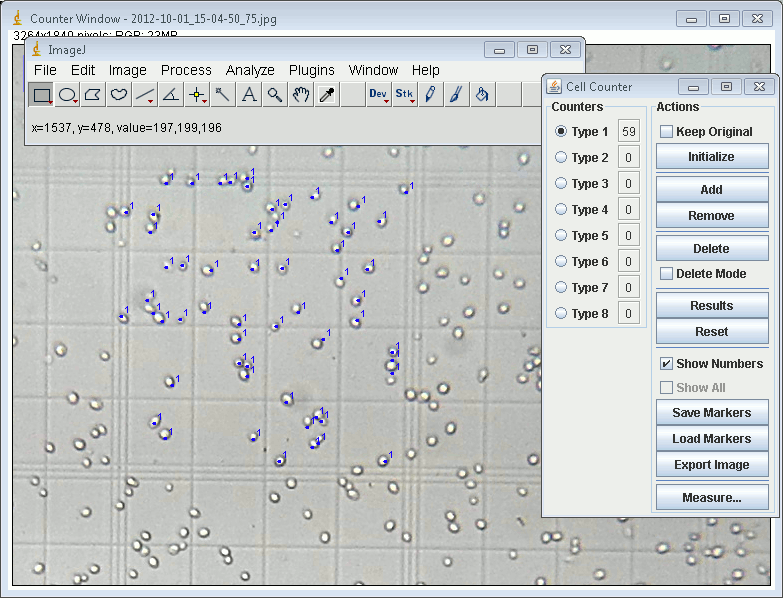

In the following tutorial we will use a dataset of microscopic
COUNT NUCLEI IMAGEJ MANUAL
Only the training images required for the manual labeling have to be added in this way, the full prediction on a large dataset can be done via Batch Processing Please note that the current version of the Counting module is limited to handling 2D data only, for this reason hdf5-datasets with a z-axis or a temporal axis will not be accepted. The image import procedure is detailed in Data Selection. *.png, *.jpg and *.tif) directly or pass hdf5 datasets. Similarly to other ilastik workflows, you can provide either images (e.g.
monitoring the object counts over sub-image regions. placing more annotations for the foreground and background. This workflow offers the possibility to interactively refine the learned density by: A pixel-wise mapping between local features and the object density is learned directly from these annotations. The user gives annotations (see tutorial below) in the form of dots (red) for the object centers and brush-strokes (green) for the irrelevant background. Please refer to the references for further details. NOTE that also contaminations of the image such as debris or other spurious objects may invalidate the estimated density. The estimates are close to the true count when integrated over sufficiently large regions of the imageĪnd when enough training data is provided. It is important to note that the object density is an approximate estimator of the true integer count. In the following figure, note that the integral of the smooth density is a real number close to the true number of cells in the image. The density is approximated by a normalized Gaussian function placed on the center of each object. Integrating over a sufficiently large image region yields an estimate of the number of objects in that region. The algorithm learns from the user annotations a real valued object density. In order to avoid the difficult task of segmenting each object individually, this workflow implements a supervised object counting strategy called density counting. How does it work, what should you annotate This workflow will estimate directly the density of objects in the image and infer the number of objects without requiring segmentation. Therefore these two images are appropriate for the Density Counting workflow. The objects in each of these images have similar appearance and similar same size, The two right images in the figure below contain small overlapping objects that are difficult to segment individually. The left image in the figure below contains large non-overlapping objects with high variability in size and appearance (red nuclei and mitotic yellow nuclei). It is appropriate for counting many blob-like overlapping objects with similar appearance (size, intensity, texture, etc.) that may overlap in the image plane. This workflow offers a supervised learning strategy to object counting that is robust to overlapping instances. Underestimates the number of objects due to under-segmentation errors. However, as the density of the objects increases, the latter approach Segmenting the foreground and then collecting the connected components as it is done in the When the density of objects in the image is low and the objects are well separated from each other, it is possible to count objects by first Counting is performed by directly estimating the density of objects in the image without performing segmentation or object detection. The purpose of this workflow is to enable counting of objects in crowded scenes such as cells in microscopy images. Interactive Density Counting Overview, what it can and cannot do





 0 kommentar(er)
0 kommentar(er)
